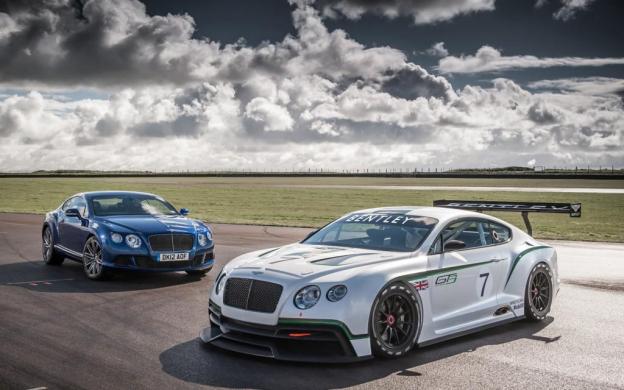 Bentley won a string of Le Mans victories in the 1920s, and since then it’s been trying to convince people that its gilded luxury cars are actually sports cars. It raced and won at Le Mans in 2003, and now Bentley is back with the Continental GT3 concept, which was shown at this week’s Paris Motor Show and previews a new Bentley racer that will take to the track next year.
Bentley won a string of Le Mans victories in the 1920s, and since then it’s been trying to convince people that its gilded luxury cars are actually sports cars. It raced and won at Le Mans in 2003, and now Bentley is back with the Continental GT3 concept, which was shown at this week’s Paris Motor Show and previews a new Bentley racer that will take to the track next year.
One look at the stock Continental GT reveals the enormity of Bentley’s task. This four-seat coupe, which weighs over 5,000 pounds in stock trim, will have to compete against Porsche 911s, Ferrari 458 Italias, and Chevrolet Corvettes, among others.
Under such circumstances, how can Bentley’s racing Continental look anything other than ridiculous? What can its engineers do to make the car something other than Boss Tweed in a track suit?
Bentley did not build the Continental GT3 concept for any specific race series, it only said that it was “tailored for race specification.” The GT3 does ditch the stock Continental’s all-wheel drive in favor of rear-wheel drive, and its bodywork definitely looks racecar-esque.
The GT3 concept has the massive rear spoiler, air intakes, and flared wheel arches of a racecar, which are pretty shocking to see on a Bentley. It may not turn out to be a successful racer, but this car will certainly give everyone who sees it a reason to smile.
In theory, those modifications should provide a balance of downforce to keep the GT3 planted, and aerodynamic efficiency to allow it to slice through the air with minimal effort. However, a racer needs more than sleek bodywork.
Bentley did not divulge any mechanical details, but it is likely that a production GT3 would borrow the 6.0-liter, twin-turbocharged W-12 from the Continental GT Speed, the fastest production Bentley. It produces 616 hp and 590 lb-ft of torque in stock form.
That seems like plenty of power, but Bentley will have to seriously lighten the Continental’s chassis to improve acceleration and handling.
Bentley says the Continental GT3 has already been approved by the FIA for competition, and its first venues will probably be 24-hour endurance races like the one held every year at the Nürburgring. Further modifications might be needed for individual events of series.
Bentley’s return to racing is the culmination of a years-long effort to revive the brand’s performance image. The 2003 Le Mans win was orchestrated by corporate sibling Audi and coincided with the launched of the first Continental GT. Since then, Bentley has been experimenting with high performance models, including the Supersports and Speed, and even set a world ice racing speed record.
A Bentley will never be quite as good as a purpose-built performance car like a 911, but it’s cool to see the company trying to break a stereotype. It’s cars may be luxurious, but that doesn’t mean they need to be boring.



